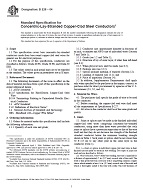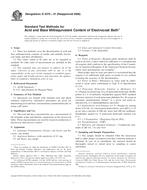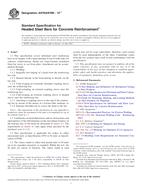1.1 These test methods describe the qualitative determination of glycol-base antifreeze in used lubricating oils (mineral base) by two procedures, one using reagents in tablet form and the other using laboratory shelf reagents. Principally the test methods detect ethylene glycol but will also detect other 1,2-glycols that may be present.
1.1.1 When a positive result is obtained and a sample of the unused oil is available, the unused oil is also tested and used as a reference.
Note 1 – Since the inception of this test method (1971), there have been many changes in base stock technology and additive technology. Therefore, when available, the new, unused oil, or a sample of the same used oil, known to not contain antifreeze, is tested as a reference.
1.2 The tablet procedure (Procedure A) is sensitive to about 100 mg/kg and the shelf reagent procedure (Procedure B) to about 300 mg/kg of ethylene glycol.
1.3 Carbohydrates such as sugars and sugar-containing substances are sometimes used for sabotage purposes. If the presence of these substances is suspected, Procedure A contains a modification to remove these interferences.
1.4 Both procedures are adaptable to field kit use, and brief descriptions for converting to field kit form are given in .
1.4.1 Commercial field testing kits are available.
1.5 The results obtained by this method are qualitative expressions. However, for the preparation of reagents and in the procedures, acceptable SI units are to be regarded as the standard.
1.6 This standard does not purport to address all of the safety concerns, if any, associated with its use. It is the responsibility of the user of this standard to establish appropriate safety and health practices and determine the applicability of regulatory limitations prior to use.
Product Details
- Published:
- 12/10/1998
- Number of Pages:
- 5
- File Size:
- 1 file , 31 KB


